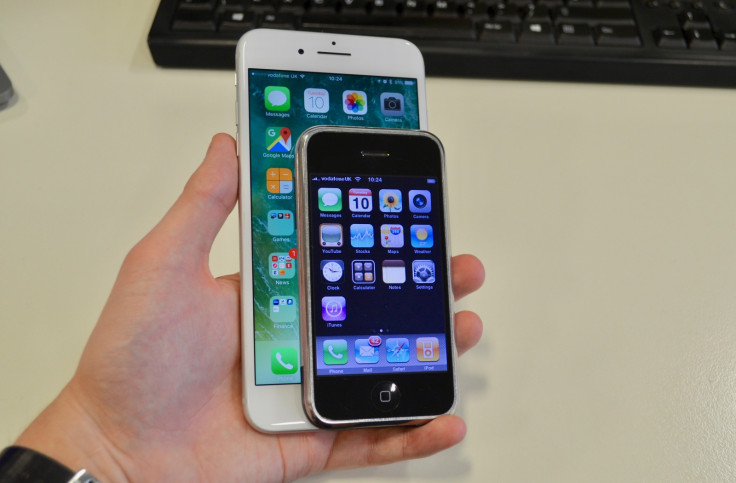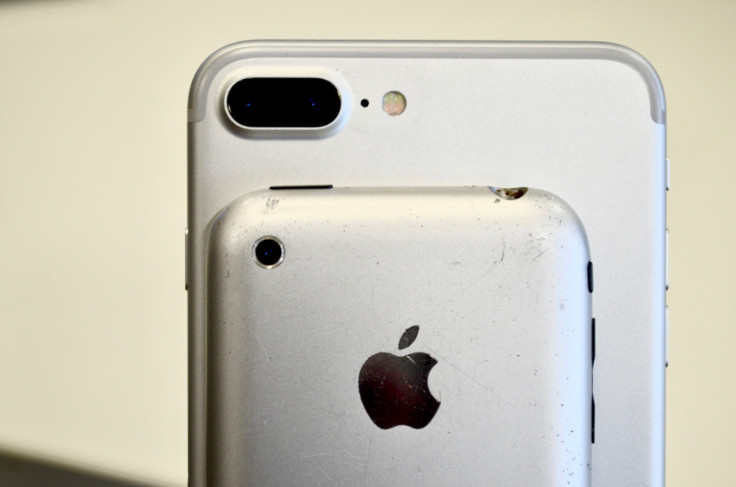Can you still use the original iPhone? We spend a day with the original smartphone
How difficult is it to live with a decade-old iPhone? We buy one off eBay on its 10th birthday to find out.

The iPhone is 10 years old. On 9 January 2007, Apple co-founder Steve Jobs announced "a widescreen iPod with touch controls, a revolutionary mobile phone and a breakthrough internet communicator". These were all one product: the iPhone.
It was a day Jobs said he had been looking forward to for two-and-a-half years, and one that has gone down as a turning point in consumer technology, the birth of the smartphone we know today.
But enough gushing over history. We put our iPhone 7 Plus to one side and used an original iPhone for 24 hours to see how they've stood the test of time – starting late on the eve of the iPhone's birthday.
Sunday, 11pm: Bubble-wrapped piece of history
Bleary-eyed and unsure of the time or day, we return home from the CES technology show in Las Vegas to be greeted by a bubble-wrapped package. Our iPhone 1 set us back £107 (€123) on eBay and comes with no box, charger or any accessories at all. It also sports several scratches and chips to the metal back and an alarming amount of mysterious gunk in the headphone jack. But it's ours, it works, and is the genesis of the smartphone. And besides, immaculate examples in the original box cost over £1,000. One joker wants £4,600 for one in a sealed box.
Monday, 11am: Comically small
After a jet-lag induced sleep we examine the iPhone in more detail; it looks and feels comically small compared to our 7 Plus. The original iPhone's screen is just 3.5in, compared to 4in for the iPhone 4 and 5, 4.7in for the iPhone 6 through to 7, and 5.5in for the Plus models.
It feels tiny yet familiar; the iOS software has undergone thousands of changes over the decade, but the home screen and menu system have remained fundamentally the same throughout.
It's funny how quickly we get used to the size of everyday products changing. Televisions, cars, smartphones; all have increased massively over the decades but only when we go backwards do the changes make themselves obvious. We remember owning an iPhone 3G and overhearing a stranger saying: "These new phones all the kids have, you can barely fit them in your pocket." We wonder what size phone they have today.
12:30pm: Who remembers MobileMe?

Inserting a SIM card then connecting to Vodafone and our Wi-Fi router was no issue at all, but getting much else done is proving difficult. The phone won't recognise our iCloud account or the details of an old @mac account. Instead it demands we log in using Apple's MobileMe service, which died in 2012 and became iCloud. We're struggling to get around this. Even opening icloud.com causes the phone's Safari web browser to crash.
12:45pm: Hello, work email
Let's try our IBTimes UK email address instead. This is starting to feel like hacking instead of simply setting up a smartphone. We enter our details and... another error. Followed by an email from Google explaining how the login attempt was blocked because the iPhone is so old its software is out-of-date and considered unsafe. We warily click "allow access to less secure apps" and try again. Success; our work emails come flooding in.
1pm: In a time before apps
Working through our inbox and replying to emails feels very familiar. The process has barely changed in a decade and that's just fine. What has changed (or rather, grown beyond belief) is the app ecosystem. Back in 2007 the AppStore did not exist; iPhone users were stuck with the 17 apps Apple supplied with the handset. Jailbreaking was an option, unlocking the phone to add third-party apps, but this was (and still is) a treacherous route towards security and instability issues.
Due to running newer software from 2009 our iPhone has the AppStore, but nothing works anymore. All popular apps require the phone to be running a newer version of iOS; Twitter, for example, demands iOS 9, but our phone cannot be upgraded beyond version three. To get around this we are using the web version of Twitter and have added a shortcut to the home screen.
YouTube also isn't supported anymore. It opens, but will only play one video; one made by YouTube to explain how the app no longer works. Safari to the rescue, again. It is now we're reminded about the iPhone's low screen resolution of 320 x 480 pixels (compared to 1080 x 1920 on the 7 Plus). HD became par for the course years ago, but pre-dating Apple's Retina screens means we're offered 'HQ' on YouTube for High Quality, rather than High Definition.

2pm: How about some positives?
The original iPhone is the perfect size for one-handed use. Where our 7 Plus feels like it is never more than balanced precariously on top of our hand, its ancestor fits snugly within our grip. We can reach the entire keyboard with our thumb and stretch easily to the top-mounted lock button with our index finger. No wonder Jobs and Apple were hesitant about upping the screen size for so long –this actually feels great.
Less great is the speed of the iPhone. Despite being connected to a 30 Mbps internet connection, web pages load very slowly compared to what we are used to. For today the slowness could just about pass as quaint, but give it a week and we'd be pulling our hair out.
2:30pm: Can you listen to music on the original iPhone?
Yes and no. Music can be transferred from laptop to iPhone via a USB cable. But downloading anything from the iTunes app is a no-go because it crashes every time we try to open it. Safari and the YouTube mobile site once again come to the rescue. Eventually.
Even just performing a search here takes the best part of a minute. And things would be much worse outside, because this phone doesn't even have 3G, let alone the 4G we are used to today. Notice how slow the internet is when your iPhone shows E instead of 4G? That's the absolute best you can ever get from this phone.

2:40pm: Anyone got a dongle?
We have finally found something to listen to, but quickly run into another problem. The first iPhone's headphone jack was sunk into its body, making it impossible to connect headphones with anything but the slimmest of cables. Apple's own earphones were (surprise!) no problem, but everyone else had to buy a dongle. Sound familiar?
We tried Bluetooth and, after punching the air with joy when our Bose headphones connected, were unable to get music to play through them. The iPhone recognises them, but only as a Bluetooth headset for making phone calls.
3pm: What about the camera?

It's a 2-megapixel sensor with no flash, image stabilisation, zoom or any features at all. It can't record video, there is no front-facing camera for selfies, no timer, no burst mode, no white balance control, no grid to help frame photos better. Nothing. Just an icon to tap to take a photo.
Having said all that, image quality is surprisingly good for its age. As long as there is enough light and nothing like a bright TV screen to mess up the automatic exposure, the original iPhone does a decent job. However, the tight framing is disappointing, compared to the wide-angle lenses of modern phones.
Worth noting is how little you could do with a photo in 2007 compared to today. The first iPhone lets you email it, assign it to a contact, or set it as your wallpaper. Today there are 14 default options.
Here is the same scene shot on the iPhone and iPhone 7 Plus:


4pm: iOS is the same, but very different
We keep being reminded of how limited old versions of iOS were. There is no notification drawer to swipe down from the top, no settings drawer to swipe up from below, no multitasking (double pressing the home button opens your favourite contacts page), and no Siri.
It feels familiar, like getting into any car from the last 60 years and being able to drive it after a minute of orientation, but also very different. We realise how spoilt we have become and just how quickly things are done with a modern smartphone; Google searches, emails, photos, video editing... it's all instant and the pace never slows no matter what your workflow is. In 2007 life was taken with one slow but sure-footed step at a time – not the maddening, multitasking rush we subject ourselves to today.

5pm: Is this it?
There isn't really much to do with an original iPhone. Our example not having App Store access lets us share the same experience Apple fans (this writer included) had on day one a decade ago. It's just a phone with a web browser. We remember friends in college being genuinely blown away by CoverFlow, the feature where you can swipe through your music by album cover.
Being able to pan around Google Maps, tap on a restaurant and book a table (or, as was more likely aged 17, order a pizza) on a phone was hugely impressive at the time. But now? There are a dozen apps for that.
9pm: 'Oh cute! Nice Chinese knock-off'
Our housemate comes home and is very impressed with the iPhone. Mostly because he thinks it is a scaled-down Chinese knock-off bought in Vegas. No, this is an iPhone; it's the same size as that 3GS you had at university a few years ago. How times change.
© Copyright IBTimes 2025. All rights reserved.






















